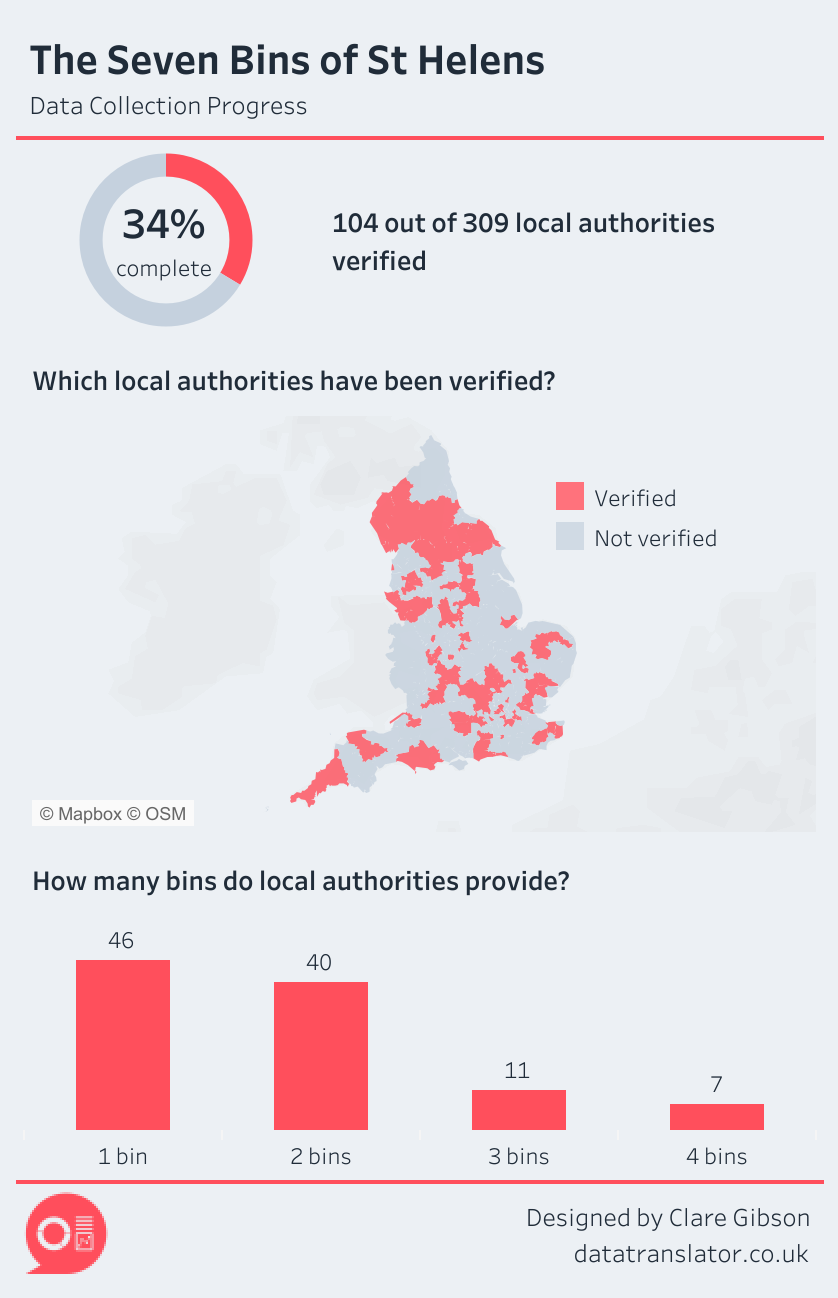Introduction
Last week I wrote about a conversation I had with my mum about the number of different containers she has to sort her household recycling into. In my house we have just one recycling bin. It got me thinking: if you have more bins to sort your recycling into, do you end up recycling more overall?
How it’s going?
I am still in the process of gathering the data I need to answer this question. Some of it has been easy to find. This includes the data on waste collected and waste sent for recycling by each local authority, which is published by DEFRA.
The data I’m still working on collecting is the number of bins for dry recycling that each local authority provides to households. This is not centrally published anywhere as far as I can see. So I deployed a survey to ask the general public to tell me how many recycling bins they have. In parallel I am researching some of the data myself by visiting local authority websites. They usually publish this information in their ‘Waste and Recyling’ section.
Where I’m up to
So far, the survey has had 33 responses (massive thank you to everyone who has responded). In total I have gathered the data for 104 local authorities (34% of the total across England), as shown in the visual below.

What I have learned
Even though I don’t yet have all of the data I need to answer the main question, I am already learning a lot about recycling in England:
- There is huge variation across all of the local authorities. Some provide 1 bin for recycling, others provide 4. Some won’t collect glass. Others won’t collect food waste. Some do collect textiles, batteries and small electrical appliances.
- So far, the most common number of bins for recycling is 1. Just a handful of local authorities provide 3 or more bins, and none (as yet) provide more than 4.
What’s next?
I will continue to gather the data for each local authority. If you want to help, please do check out the survey and share it. I’m looking forward to sharing more about this project in due course.
